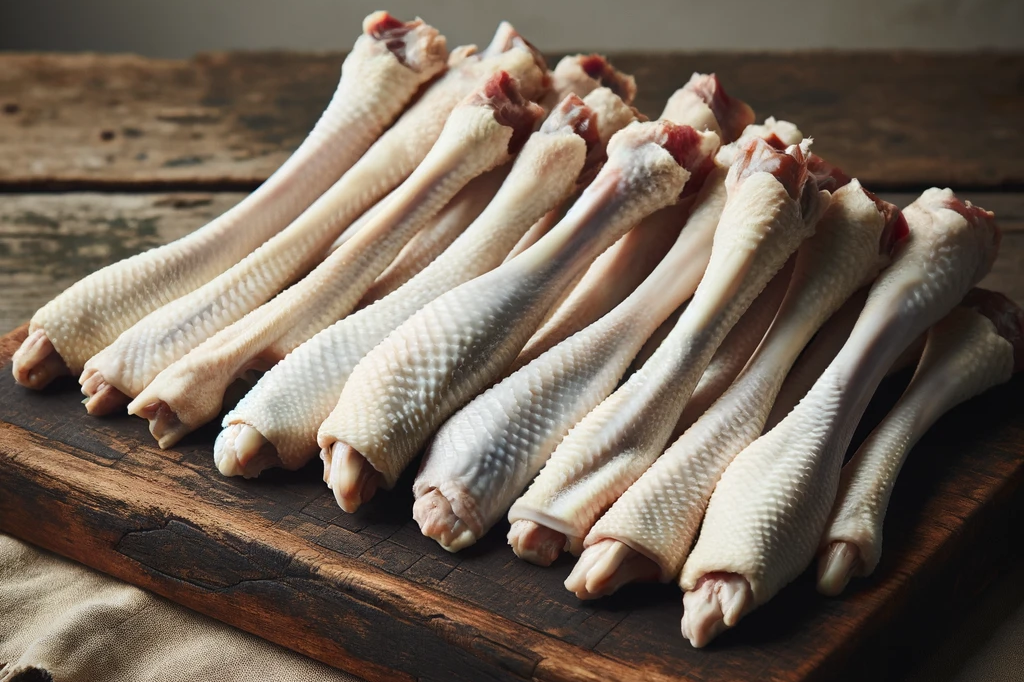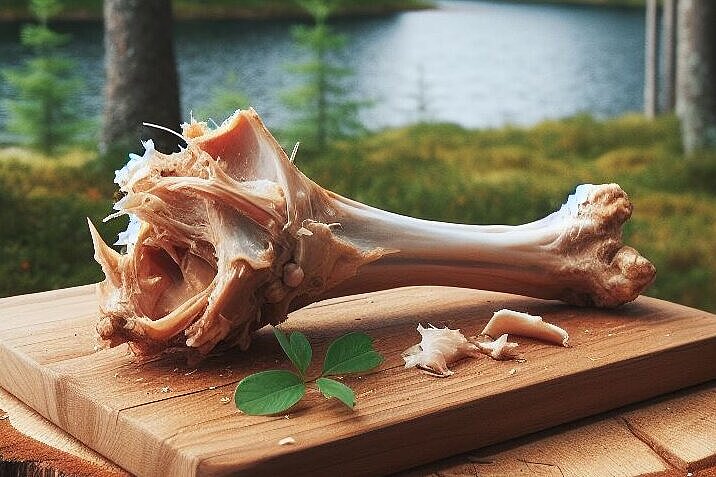Turkey thigh bone
The question of whether or not dogs should eat bones is as old as the human-dog relationship itself. Turkey leg bones in particular are often at the center of the discussion. They can be both a source of joy and concern. This article will take you on a detailed journey through the world of turkey leg bones, highlighting their pros and cons for dogs and providing you with an informed basis for deciding whether or not to offer them to your four-legged friend.
What are turkey thigh bones?
Turkey thigh bones are the bones found in the lower part of the turkey leg, an area known for its dark, flavorful meat. While the meat is a popular source of protein, the bones themselves draw a number of debates, especially when it comes to feeding them to dogs.
Benefits of turkey thigh bones for dogs
Natural chewing pleasure
Dogs have a natural instinct to chew. Turkey thigh bones can satisfy this need and help to keep dogs happy and occupied.
Dental hygiene
Chewing on bones can help to mechanically clean teeth and prevent tartar build-up.
Source of nutrients
Bones contain minerals such as calcium and phosphorus, which are important for a dog's healthy skeleton.
Disadvantages and risks of turkey thigh bones
Risk of splintering
Cooked bones, including turkey thigh bones, can easily splinter. These splinters can lead to serious internal injuries, such as perforations in the digestive tract.
Risk of blockage
Large pieces of bone can block the digestive tract, which can lead to serious digestive problems.
Choking hazard
There is a risk of large pieces of bone getting stuck in the throat, which would require immediate emergency veterinary care.
Nutritional imbalance
An excess of bone in the diet can lead to an imbalance of nutrients, particularly excess minerals such as calcium.
A question of consideration
The decision whether to give your dog turkey leg bones should not be taken lightly. It's important to weigh the benefits against the potential risks. If you choose to offer bones to your dog, choose raw bones and monitor your dog carefully as he chews on them. Raw bones are less likely to splinter than cooked bones. However, it is essential to match the size of the bone to your dog's size and chewing strength. Ultimately, a knowledgeable and careful approach to feeding bones can help your dog enjoy the benefits without being exposed to unnecessary risks.
If you notice any signs of hypersensitivity or poisoning in your dog, you should see your vet immediately. We are not a substitute for a vet, but we try to be as accurate as possible. Every dog reacts differently and we recommend you get a second opinion or consult your vet if in doubt.
Stay healthy and take good care of your four-legged friend!😊
Similar to Turkey thigh bone
Duck thigh bones are exactly what their name suggests: the bones from the thighs of ducks. They can be offered raw, cooked or dried and are considered a tasty and nutritious addition to regular dog...
Goose thigh bones are the hard structures that form the lower part of a goose's leg. After the meat has been removed for human consumption, the bones often remain, which at first glance appear to be...
Chicken thigh bones are the bones from the lower part of the chicken leg. They consist of a long tubular bone and a short jointed bone. The bones are surrounded by meat, skin and cartilage. Chicken...
Pigeon thigh bones are, as the name suggests, the bones from the thighs of pigeons. They are usually found in dogs' diets as part of a raw meat diet (BARF - Biologically Appropriate Raw Food). Their...



